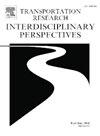运输从业员的远景规划
IF 3.9
Q2 TRANSPORTATION
Transportation Research Interdisciplinary Perspectives
Pub Date : 2025-06-27
DOI:10.1016/j.trip.2025.101483
引用次数: 0
摘要
随着运输部门越来越关注以愿景为导向而不是以预测为导向的规划,人们越来越需要思考一个好的愿景是什么样子的,如何创造一个愿景,谁应该参与创造一个愿景,以及最终,一个愿景随后具有什么价值。在预见和情景规划领域,未来可以分为三种类型:可能的、可能的和首选的。偏好的未来,或愿景,是我们选择为之努力的特征。它们涉及价值观的清晰性,并明显暗示价值观是可以被质疑的。本文利用现有文献以及作者的经验来研究愿景发展中的考虑因素-作为愿景主导的交通规划方法的一部分。它由10个指导性问题组成,如果按顺序回答这些问题,就有助于在制定愿景的过程中制定路线(所谓的“愿景”)。这组问题的相互依存性质也被强调。本文章由计算机程序翻译,如有差异,请以英文原文为准。
Visioning for transport practitioners
With increasing transport sector interest in vision-led rather than forecast-led planning, there is a growing need to think about what a good vision looks like, how a vision can be created, who should be involved in creating a vision, and, ultimately, what value a vision subsequently has. In the field of foresight and scenario planning, futures can be categorised as one of three types: probable, possible, and preferred. Preferred futures, or visions, characterise what we choose to work towards. They involve clarity around values, with the evident implication that values can be contested. The paper draws upon existing literature alongside the experience of the authors to examine considerations in the development of visions – as part of the vision-led approach to transport planning. It is framed by a set of ten guiding questions that, when taken in sequence, help to chart a course through the process of developing a vision (so-called ‘visioning’). The interdependent nature of the questions within the set is also highlighted.
求助全文
通过发布文献求助,成功后即可免费获取论文全文。
去求助
来源期刊

Transportation Research Interdisciplinary Perspectives
Engineering-Automotive Engineering
CiteScore
12.90
自引率
0.00%
发文量
185
审稿时长
22 weeks
 求助内容:
求助内容: 应助结果提醒方式:
应助结果提醒方式:


